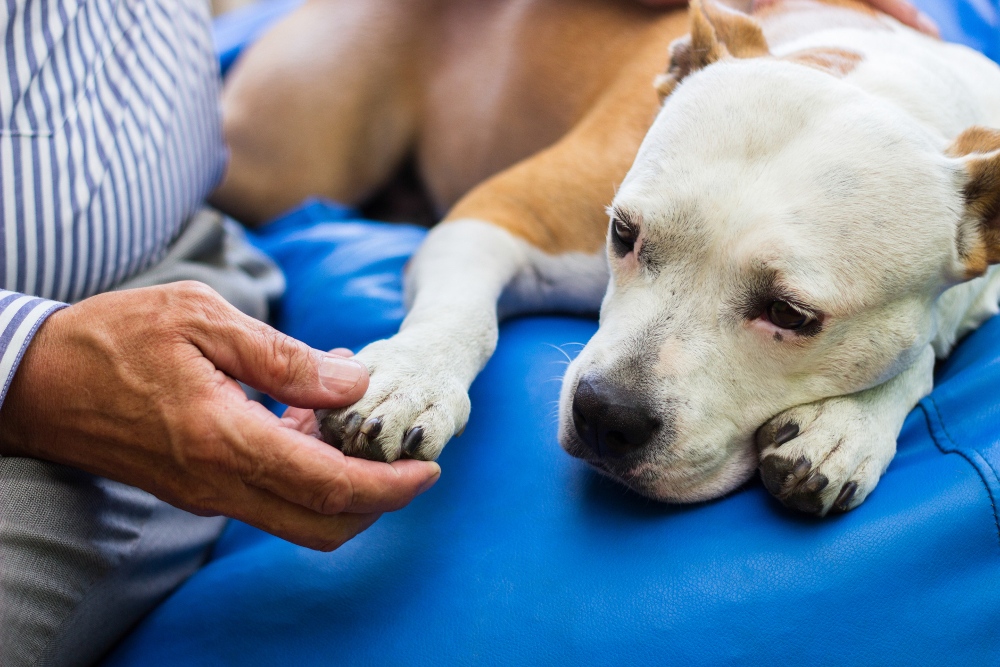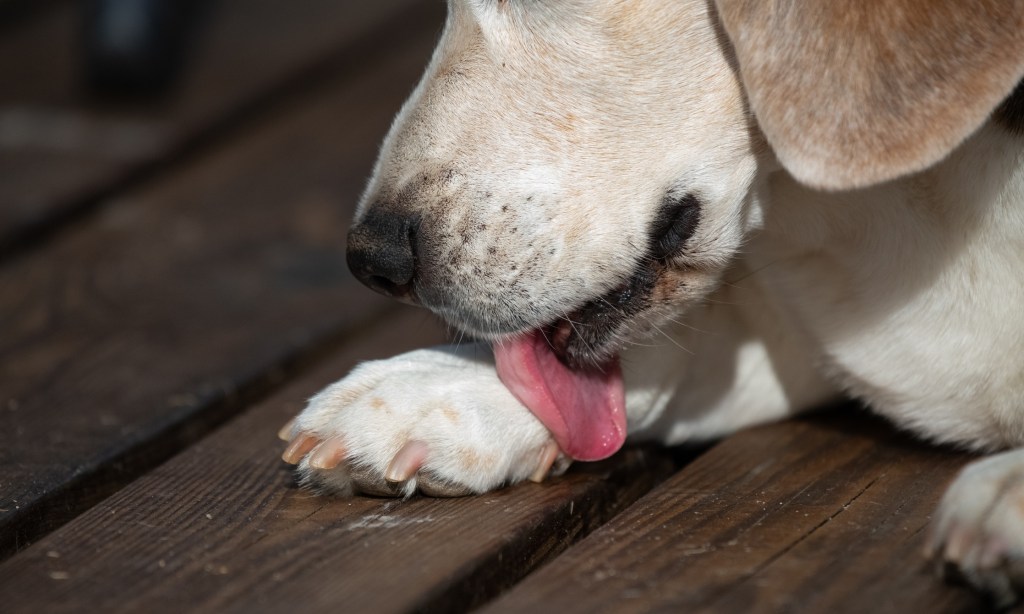Table of Contents
How and When to Safely Make Your Dog Throw Up
Dogs aren’t picky eaters. They’ll eat just about anything, unconcerned if what they eat is dangerous or toxic.
Inducing vomiting may be necessary if your dog ate something he shouldn’t have. But it is not without risks and isn’t the go-to solution for all of a dog’s poor eating choices.
Keep reading to learn more about how and when to make your dog vomit safely.
When You Should and Should Not Induce Vomiting in Adult Dogs and Puppies
In an emergency, inducing vomiting can be an effective way to quickly begin emptying your dog’s stomach if your dog ate the wrong thing.
However, inducing vomiting is not safe or appropriate in all situations. Here’s when you should and should not induce vomiting in a dog, whether the dog is an adult or a puppy.
When you should induce vomiting
- It’s been less than 1 to 2 hours since your dog has eaten. Inducing vomiting is effective only before whatever was eaten starts getting absorbed by the body.
- Your dog has swallowed something soft, like a sock or dishcloth.
- Your dog does not have health issues that could make inducing vomiting dangerous.
- Your dog ate a toxic food, like chocolate or garlic.
- Your dog is not showing symptoms of eating something toxic (e.g., seizures).
When you should not induce vomiting
- It’s been more than 2 hours since your dog ate.
- Your dog is a brachycephalic breed. Smoosh-faced breeds, such as Pugs, have a high risk of aspiration pneumonia, which occurs when stomach contents are breathed into the lungs.
- Your dog ate something sharp or caustic. Sharp objects can tear the lining of the esophagus if vomiting is induced. Caustic substances, such as batteries and oil, can also damage the esophageal lining during vomiting.
- Your dog has a health condition, such as laryngeal paralysis or megaesophagus, that increases the risk of aspiration pneumonia.
- Your dog is showing symptoms of toxic absorption. These symptoms include neurologic symptoms, such as seizures or a coma.
Step-by-Step Instructions on How to Safely Induce Vomiting
Ideally, inducing vomiting is performed at a veterinarian’s office or an emergency veterinary hospital. If it is done at home, it should be performed only with professional veterinary guidance.
If your dog ate something he shouldn’t have, contact your veterinarian first. If your vet is not available and you are not able to make it to an emergency veterinary hospital, call the Pet Poison Helpline (855-764-7661) or the ASPCA Animal Poison Control (888-426-4435) for guidance on safely inducing vomiting at home.
These organizations are available 24 hours a day, but may charge a fee.
Here are the steps for safely inducing vomiting in your dog at home:
- Try to give your dog a small meal. Eating some food may help stimulate vomiting.
- If your dog refuses to eat or does not vomit after the small meal, give your dog 3% hydrogen peroxide, which irritates the digestive tract lining enough to stimulate vomiting. The recommended dose for dogs is 1 teaspoon per 5 pounds of body weight by mouth. Never give more than 3 tablespoons total for any dog.
- Carefully open your dog’s mouth and administer the 3% hydrogen peroxide as far back in the mouth as you can. You can use either a syringe (without the needle) or a clean turkey baster. Make sure your dog does not inhale the hydrogen peroxide.
- The hydrogen peroxide should induce vomiting within about 10 to 15 minutes. If your dog has not started vomiting within that time, administer another dose. Do not give more than 2 doses.
- Ensure your dog is as comfortable as possible while he vomits because hydrogen peroxide-induced vomiting can last up to 45 minutes. Prevent your dog from re-ingesting the vomit.
- Monitor your dog for symptoms such as diarrhea, lethargy, or vomiting lasting more than 45 minutes.
- Collect a sample of the vomit for analysis.
- After your dog has stopped vomiting, take your dog to your veterinarian or an emergency veterinary hospital (if your veterinarian isn’t available).
Take your dog to the nearest emergency veterinary hospital if your dog is not vomiting after 2 doses of hydrogen peroxide. The veterinary staff will give your dog a more effective vomiting-inducing medication, such as apomorphine.
Why 3% Hydrogen Peroxide?
It is imperative to use only 3% hydrogen peroxide to induce vomiting in dogs. A higher concentration is toxic to dogs.
If vomiting is successfully induced with 3% hydrogen peroxide, about 40-60% of the stomach contents will be vomited.
The table below will help you determine how much 3% hydrogen peroxide to give your dog to induce vomiting. Keep in mind that 1 teaspoon = 5 milliliters and 1 tablespoon = 15 milliliters.
| Body Weight in Pounds | Teaspoons of 3% Hydrogen Peroxide | Milliliters of 3% Hydrogen Peroxide |
|---|---|---|
| 5 | 1 | 5 |
| 10 | 2 | 10 |
| 15 | 3 | 15 |
| 20 | 4 | 20 |
| 25 | 5 | 25 |
If you do not have a syringe to measure the hydrogen peroxide, use a baking teaspoon or tablespoon to ensure you have the right amount. A regular spoon will not provide an accurate measurement.
Remember that no dog should receive more than 3 tablespoons (45 milliliters) of 3% hydrogen peroxide.
What NOT To Do
You may have heard or read about other substances you could give to induce vomiting in dogs. Please do not use them! Use only 3% hydrogen peroxide at the proper dose to induce vomiting in your dog.
Here is the list of what not to give and why:
- Salt: Giving your dog salt will increase the salt level in your dog’s blood, causing such symptoms as unsteadiness and tremors.
- Olive oil: Olive oil can cause serious digestive problems, such as pancreatitis and greasy stools. If inhaled, olive oil can cause aspiration pneumonia.
- Syrup of Ipecac: Syrup of Ipecac is unsafe for pets and can cause heart problems.
- Alcohol: Alcohol is poisonous to dogs.
- Gagging: Unlike people, dogs don’t have a gag reflex. Gagging will not help your dog vomit and will increase your risk of being bitten.
- Mustard: Mustard is toxic to dogs and can cause severe digestive upset.
Aftercare
Your dog will need veterinary care, regardless of whether inducing vomiting is successful.
If you were able to induce vomiting, watch for symptoms that warrant immediate veterinary care:
- Lethargy
- Diarrhea
- Signs of gastric-dilatation volvulus, such as drooling and an enlarged abdomen
- Vomiting for more than 45 minutes
For the veterinary appointment, your veterinarian will analyze the vomit to determine what your dog ate. Also, because hydrogen peroxide irritates the digestive lining, your vet may prescribe a medication to repair the lining.
Prolonged vomiting can cause dehydration. If your dog is dehydrated after vomiting is induced, your veterinarian may need to administer fluids to restore hydration and levels of electrolytes (e.g., sodium, potassium).
Vomiting is no fun, so your dog will probably need time to recover after vomiting has been induced. Your veterinarian can recommend an easily digestible diet until your dog gets back to their regular diet.








